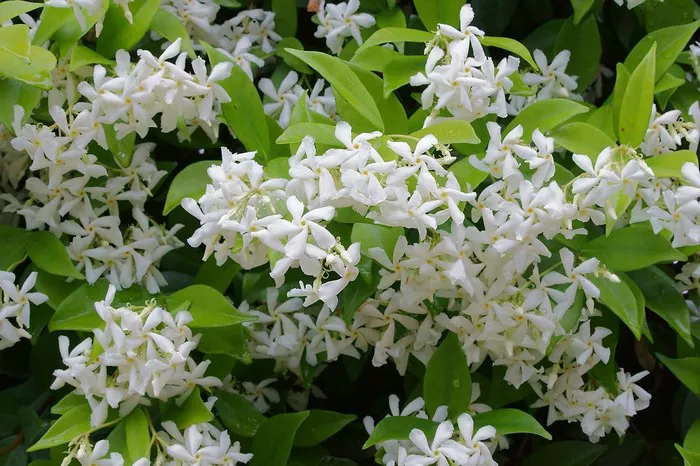Jasmine, with its delicate petals and enchanting fragrance, has captivated humans for centuries. From ancient rituals to modern perfumery, this flower holds a special place in various cultures around the world. But just how many types of jasmine flower are there? This article delves into the fascinating world of jasmine, exploring its diverse species, characteristics, and cultural significance.
Jasmine: A Timeless Elegance
Jasmine belongs to the genus Jasminum, which is part of the Oleaceae family. This genus comprises over 200 species of flowering plants, many of which are commonly referred to as jasmine. Native to tropical and subtropical regions of Eurasia, Australasia, and Oceania, jasmine plants are known for their climbing vines, evergreen foliage, and white or yellow flowers.
Classification of Jasmine Species
Within the genus Jasminum, there are numerous species and cultivars, each with its own unique features and characteristics. While it’s challenging to provide an exact count of jasmine species due to ongoing botanical research and taxonomy revisions, several well-known varieties stand out:
1. Common Jasmine (Jasminum officinale): Also known as poet’s jasmine or summer jasmine, Jasminum officinale is one of the most popular species. It features clusters of small, white flowers with a sweet, intoxicating fragrance. Common jasmine is widely cultivated for its ornamental beauty and aromatic oils.
2. Arabian Jasmine (Jasminum sambac): Renowned for its rich fragrance and cultural significance, Jasminum sambac is native to South and Southeast Asia. Also called sampaguita in the Philippines, Arabian jasmine produces small, white flowers that are often used in religious ceremonies, weddings, and traditional medicine.
3. Star Jasmine (Trachelospermum jasminoides): Despite its common name, star jasmine is not a true jasmine but belongs to the Apocynaceae family. Native to East Asia, particularly China and Japan, this species is valued for its glossy, dark green leaves and star-shaped, white flowers. It is prized as a decorative vine and ground cover plant.
4. Winter Jasmine (Jasminum nudiflorum): Unlike most jasmine species that bloom in warmer months, Jasminum nudiflorum flowers in winter or early spring. Originating from China, this deciduous shrub produces bright yellow flowers on bare stems before the leaves emerge, adding a splash of color to the winter landscape.
5. Madagascar Jasmine (Stephanotis floribunda): Also known as bridal veil or waxflower, Stephanotis floribunda is prized for its waxy, star-shaped flowers and glossy foliage. Native to Madagascar, this climbing vine is popular in wedding bouquets and floral arrangements, symbolizing purity and devotion.
Cultural Significance of Jasmine
Jasmine holds profound cultural significance in many societies, where it is revered for its beauty, fragrance, and symbolic meanings. Here are some examples of how jasmine is celebrated around the world:
India: In Indian culture, jasmine, especially Jasminum sambac, holds sacred importance. It is associated with various Hindu deities, such as Lord Vishnu and Goddess Lakshmi, and is commonly used in religious rituals, weddings, and festivals. The fragrant jasmine garlands, known as “mogra” or “gajra,” adorn women’s hair and symbolize purity and auspiciousness.
China: Jasmine has a long history in Chinese folklore and traditional medicine. Jasmine tea, made by infusing green tea leaves with jasmine flowers, is a popular beverage valued for its delicate aroma and purported health benefits. Additionally, jasmine symbolizes beauty, grace, and femininity in Chinese culture.
Middle East: Arabian jasmine (Jasminum sambac) holds special significance in the Middle East, where it is revered for its fragrance and cultural associations. In countries like Saudi Arabia and the United Arab Emirates, jasmine garlands are exchanged as tokens of affection during weddings and special occasions. The sweet scent of jasmine perfumes the air, creating a serene and inviting atmosphere.
Western Culture: Jasmine’s allure extends beyond Asia, influencing Western perfumery, literature, and art. The intoxicating fragrance of jasmine flowers has inspired countless perfumes, including iconic fragrances like Chanel No. 5. In literature, jasmine often symbolizes love, sensuality, and spiritual purity, evoking a sense of romance and enchantment.
Conservation and Cultivation of Jasmine
Despite its cultural significance and widespread popularity, some jasmine species face threats from habitat loss, deforestation, and overharvesting. Conservation efforts are underway to protect endangered species and preserve the genetic diversity of jasmine plants. Botanical gardens, research institutions, and environmental organizations collaborate to study and propagate rare jasmine species, ensuring their survival for future generations.
In addition to conservation initiatives, jasmine cultivation plays a crucial role in supporting local economies and livelihoods. Small-scale farmers and horticulturists cultivate jasmine for commercial purposes, supplying flowers, essential oils, and plant materials to domestic and international markets. Sustainable farming practices, such as organic cultivation and agroforestry, help mitigate environmental impacts and promote biodiversity conservation.
Conclusion
In conclusion, jasmine’s timeless elegance and cultural significance make it a beloved flower cherished by people around the world. Whether adorning wedding ceremonies in India, perfuming tea gardens in China, or inspiring perfumers in France, jasmine captivates our senses and nourishes our souls. As we continue to explore and appreciate the diversity of jasmine species, let us also strive to conserve and protect these precious plants for future generations to enjoy.


